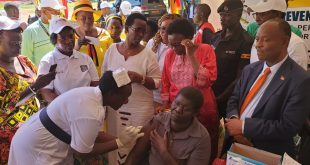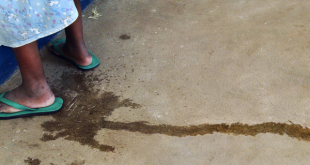Tuesday, 1 November 2022

By Lawrence Okwakol -Nakapiripirit
Leaders in Nakapiripirit district have asked government to address the causes of child trafficking and rural to urban migration especially from Karamoja to other major urban areas like Jinja and Kampala Cities.
Agnes Flora Aguma, the clerk to council of Nakapiripirit district council in an engagement meeting held at Nakapiripirit town council hall, organised by Governance and Accountability of Inter-district Network (GAIN) and supported by a German international NGO Kondrad Adeneur Stifftung said Kampala city authority and other towns should not chase away the street children merely because they resolved in council without assessing the causes why these street children and beggars left their residential districts.
Aguma said most of the victims are from Karamoja sub region whose mindsets need to be carefully developed to adhere to rural settings.
“Am happy for what GAIN is doing to start with the handling of grassroot leaders so that when the victims are repatriated, the community welcomes them not as town rejects . I still implore GAIN to engage Kampala and relevant committees of parliament that are directly involved in this,” Aguma said.
Joseph Bongo the District Police Commander of Nakapiripirit while making his presentation said some children are taken as labourers, maids, shamba boys and beggars, some are trafficked to do prostitution, barren people also steal and traffic children for themselves and for labour.
Bongo said Insecurity either economically and socially are some of the reasons why victims get exposed to child/human trafficking and they end up moving because the perpetrators promise their victims a lot of opportunities.
Paul Wayama the chairperson of Moruita ward in Moruita town council, Nakapiripirit district said some of the street children were being hunted back at home by people whom they reported to have guns. Wayama said some of the street children can not freely come and settle here unless there is some activity more attractive than being in the streets and if insecurity in Karamoja is clearly dealt with.
However, Addah Anyakun the community development officer of Nakapiripirit town council said this grassroot movement to urban areas results from peer groups and poor parenting. Anyakun said parents don’t give time to their children by guiding them and embracing embrace education.
Samson Okurut Emaasit the GAIN program manager said they initiated the idea of engaging local leaders to find suitable means of controlling rural-urban migration yet some economic activities that will put money in people’s pockets are in the village.
Emaasit said the interventions of the local leadership have been captured and at appropriate time will be delivered to the committee of gender, labour and social development chaired by Alex Ndeezi.
However, John Michael Okurut the resident district commissioner for Nakapiripirit district said with all these concerns raised, people should take education as key. Okurut said Nakapiripirit district is experiencing high dropout rates in the region.
Angelina Amaese one of the participants said GAIN should take this clear initiative of involving leaders deep to the manyattas where the victims are if it is to curb the rural to urban migration.
Migration from rural Karamoja to towns, cities and other rural areas has long been part of local livelihood strategies, but attention to this phenomenon by national and international actors in Uganda has grown in recent years. Much of this attention is focused on the population of people from Karamoja living in the larger southern cities such as Kampala and Jinja.

For decades, the Karamoja region has been characterised by violent conflict, high levels of poverty and food insecurity. It is vulnerable to severe natural disasters with frequent droughts and resulting loss of crops and livestock and historically, has been isolated. The economic growth experienced in the rest of Uganda has had little impact in Karamoja. An estimated 82 per cent of the population lives in poverty.
As a result, most families in Karamoja have resorted to alternative sources as a resilience mechanism to have some form of livelihoods in order to survive. The most prominent one is begging and, as children get more sympathy than adults, most of those begging on the street are the former.
Families often take children from relatives as far as Kampala in order to provide basic necessities for their families. On the streets of Kampala, the highest population of street beggars are from Northern region of Uganda, including Karamoja.
It is estimated that about 300 Karimojong children and teenagers live in Kisenyi and Katwe parishes in Kampala. Another 500 children live with adult caretakers who spend the day on the streets or in the markets sorting cereals.
The information from communities revealed that there are adults who live on the money collected by street children, including parents in Karamoja, especially in Napak.
Due to fears of child trafficking and labour, Kampala Capital City Authority (KCCA) earlier this year rounded up 259 street children and returned them to Karamoja Sub-region where authorities rehabilitated them before they were reunited with their families.



